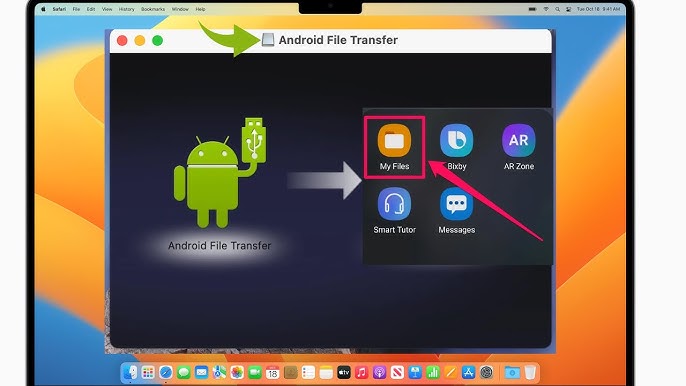Is Android File Transfer on Mac Still Reliable in 2025?

For years, Android users who also owned a Mac had to rely on one primary solution for moving their files: Android File Transfer (AFT). It was Google’s official tool, designed to help bridge the gap between Android’s MTP system and macOS, which lacked native support. Many people even searched for android file transfer mac to download the utility, since it was considered the standard way to connect an Android device to a Mac. But in 2025, the reality is that AFT is no longer supported, and its reliability has dropped significantly.
The Rise and Decline of Android File Transfer
When it was first introduced, AFT solved a big problem. Windows systems already supported Android connections natively, but Apple’s macOS did not. AFT gave users the ability to connect their devices, browse storage, and drag files with relative ease.
However, over the years, problems started to surface. As macOS evolved and Android phones became more advanced, the tool began failing to keep up. Users complained about frequent crashes, limited transfer speeds, and connection errors. Instead of releasing regular updates, Google let the tool stagnate. By 2025, it is seen less as a solution and more as a relic that only works in certain cases.
Why AFT Lost Support
The lack of updates is the biggest issue. Apple’s operating system has undergone significant changes in terms of security and file management, and unsupported software struggles to keep pace. Because AFT is not actively maintained, it often fails to recognize newer Android devices.
Manufacturers themselves also started providing alternatives, such as their own desktop transfer apps or wireless syncing options. Cloud platforms grew in popularity, making the need for a wired solution less critical. As a result, people searching for [android file transfer mac] today often discover that the tool is outdated, with little chance of improvement.
The Risks of Using Old Builds
Some users still try to install older builds of Android File Transfer. These can occasionally be found online, but downloading them is risky. Outdated installers may not be secure, and because they are no longer supported by Google, there is no guarantee they will work on modern versions of macOS.
Even if you manage to get it running, the experience is unreliable. Crashes, failed transfers, and incomplete copying are common. For anyone working with large files, such as HD videos or extensive image libraries, the tool quickly becomes more of a frustration than a solution.
What Happens If You Use AFT in 2025?
If you connect your phone today using AFT, you may still get some basic functionality, especially if you are using an older Mac or Android device. But the reality is far from smooth. File browsing often feels clunky, large transfers fail midway, and the program sometimes does not launch at all.
In 2025, file sizes have only increased, making these problems worse. A tool that was once passable now feels outdated, unreliable, and slow. Since no new updates are being released, there is no chance that these issues will improve.
Better Alternatives for Mac Users
Fortunately, Android users are not without options. Several alternatives now exist that outperform AFT by a wide margin. Cloud-based platforms such as Google Drive, OneDrive, or Dropbox allow you to upload files from your phone and access them on your Mac instantly. This method requires an internet connection, but it avoids compatibility headaches.
Wireless apps like AirDroid or Pushbullet also make transfers effortless. These tools not only let you copy files but also sync notifications and even control your phone from your Mac. For users who prefer a USB-based approach, third-party apps such as HandShaker or Commander One provide a smoother experience than AFT ever did.
Why Professionals Should Move Away from AFT
For professionals in fields like digital marketing, content creation, or SEO, efficiency is essential. Transferring large numbers of files daily demands a tool that is reliable and secure. Depending on an outdated utility like AFT slows down workflow and introduces unnecessary risks.
From an SEO perspective, using tools that save time and maintain security makes more sense. If you are constantly working with website images, videos, or reports, switching to a modern solution ensures your productivity stays intact. Outdated tools like Android File Transfer are more of a liability than a help in today’s fast-moving digital landscape.
The Future of File Transfers Between Android and Mac
The shift away from direct transfer tools is clear. Cloud storage and wireless solutions dominate the landscape because they offer flexibility, speed, and security. It is unlikely that Google will revive Android File Transfer, as the industry trend focuses on seamless, cross-platform integration rather than one-off utilities.
Still, there will always be users who prefer offline transfers. For them, third-party software is stepping in to fill the gap. These apps are actively updated to work with both the latest Android devices and macOS versions, making them far more reliable than clinging to AFT.
A Smarter Way Forward
So, is Android File Transfer on Mac still reliable in 2025? The answer is no. While you can try installing an old build, you do so at your own risk. The tool has not been supported for years, and the problems far outweigh the benefits. Instead of wasting time troubleshooting AFT, it is better to adopt modern solutions that are secure, fast, and regularly updated.
If you still rely on [android file transfer mac], understand that it is no longer the dependable utility it once was. The smarter move is to explore cloud-based platforms, wireless transfer apps, or trusted third-party software that keeps up with today’s technology. AFT may have served its purpose in the past, but in 2025, it is time to move on to better tools.

Source: Is Android File Transfer on Mac Still Reliable in 2025?




